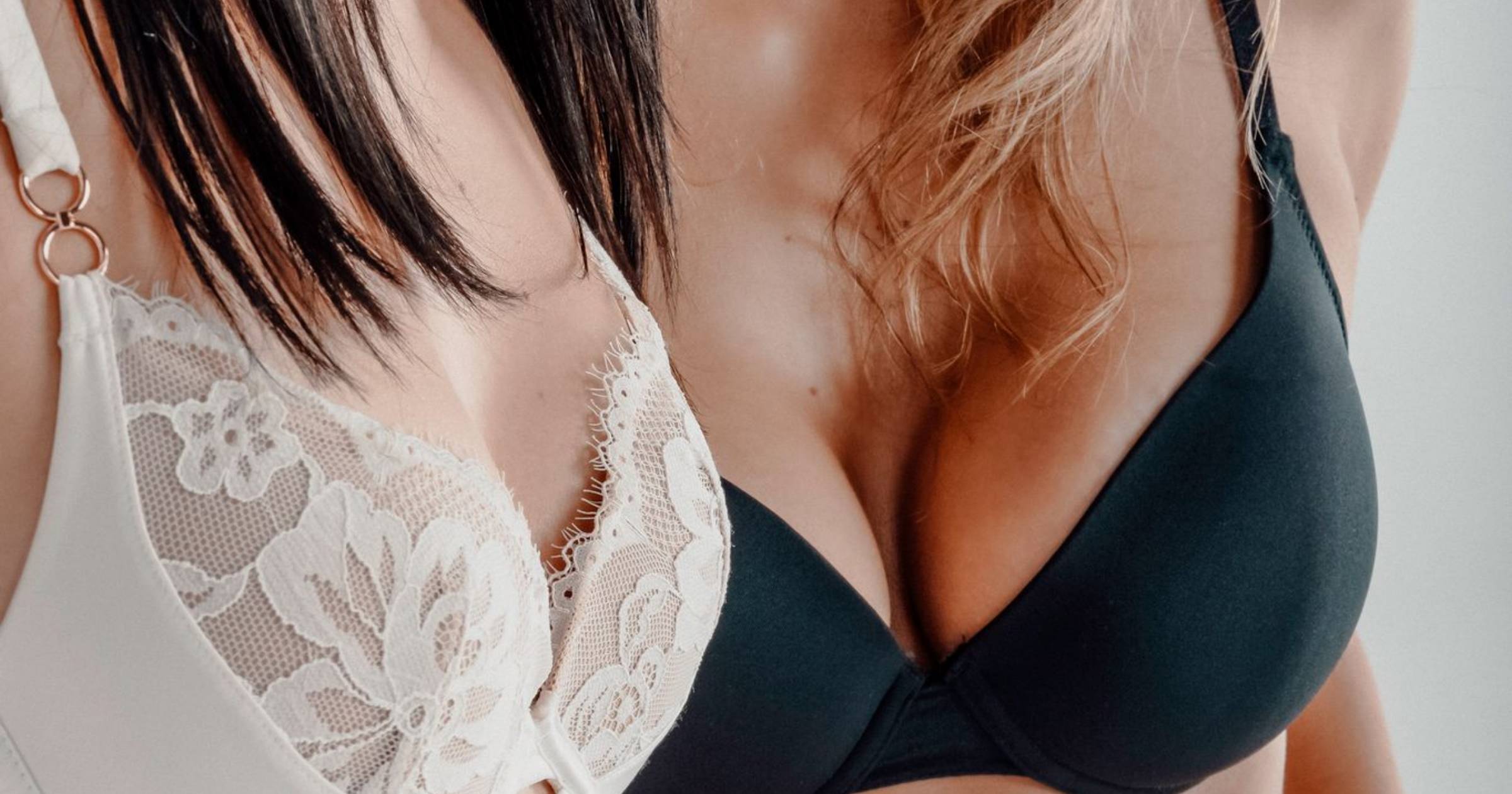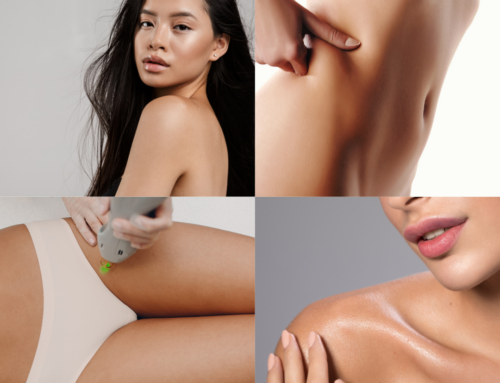What Are Double Bubble Breast Implants?

Anybody who’s been considering a breast augmentation is likely to have read up on some of the potential complications or side effects that accompany getting breast implants. And whilst most of these complications are indeed rare, it certainly still pays to familiarise yourself with the ins and outs of this cosmetic procedure, as you would any other medical procedure.
To help shed a little light on what to expect from the post-op or recovery period of your breast augmentation, we’ll be outlining one of the more well-known complications that accompany this procedure: double-bubble breast implants.
Read on to secure answers to all the most common questions you’re likely to have when it comes to double-bubble breast implants.
In this guide you will learn:
- What is a double-bubble breast implant?
- What are the symptoms?
- What causes double bubble breast implants?
- Treatment options
What is a double-bubble breast implant?
First, let’s start with a basic definition of double-bubble breast implants. Also referred to as double bubble breast deformities, this complication occurs when the breast implants don’t align perfectly with the patient’s lower breast tissue. This misalignment effectively creates a visible bulge below the lowest part of the breast’s natural fatty tissue (i.e. your natural breast fold), producing the effect of a second bulge or indentation – hence the name ‘double bubble’.
In some cases, plastic surgeons may decide to alter the position of your natural breast folds (or your ‘inframammary creases’) during a breast augmentation. This is either to correct naturally asymmetrical folds or even just to make space in the breast for implants to be positioned, as breast implants are designed to sit above inframammary creases. If an implant slips below this crease, then a second crease will be produced by the position of the base of that implant. And if you detect this second crease, then you’ll need to consult your plastic surgeon to correct your double bubble breast deformity.
What are the symptoms of a double bubble breast implant?
So apart from that second breast fold, are there any other tell-tale signs that you have a double bubble breast implant? Most breast augmentation patients have reported experiencing the following symptoms alongside their double bubble breast deformity:
- Pain or discomfort in the breast
- Hardening of affected breasts (also referred to as ‘capsular contracture’)
- Asymmetry of breasts
- Too much or too little upper breast fullness
There are actually two different types of double bubble breast implants:
- Type 1 Double Bubble Breast Implants – caused by incorrect implant positioning
- Type 2 Double Bubble Breast Implants – caused by sagging tissue (or ‘breast ptosis’)
These two distinct types of double bubble breast deformities share the same symptoms we’ve listed above, but determining which type of double bubble complication you have can aid in promptly correcting your breast implant. Of course, the best method for determining what type of double bubble breast implant you have is to consult your plastic surgeon. More on these two types of double bubble breast implants below!
What causes double bubble breast implants?
As we mentioned, Type 1 double bubble breast implants are caused by the implant being incorrectly positioned behind your natural breast tissue. This can result in your implant slipping down over time, or even mere days or weeks following your breast augmentation procedure.
Type 1 Double Bubble Breast Implants
Here are just some of the more common causes behind Type 1 double bubble breast implants:
1. Unpronounced inframammary fold
If your natural breast fold is poorly defined, then it may fail to provide support for your implant, which can then result in it dropping below and forming a dreaded double bubble.
2. Tuberous breasts
If the lower-pole of the breast is naturally tight or constricted (i.e. the distance between your nipple and breast fold is shorter than average), then there may not be adequate space to position the breast implant.
3. Surgically altering the natural breast fold
For patients who are looking to secure larger than average breast implants, cosmetic surgeons may opt to surgically release the inframammary crease to make additional space to accommodate larger implants. Whilst this technique may allow patients to successfully receive larger implants, it may also result in the formation of double bubble breast deformities due to the reduction of support from the altered breast fold.
Type 2 Double Bubble Breast Implants
As for Type 2 double bubble breast implants, these are typically all caused by just one thing: breast ptosis, or sagging breast tissue. Our breasts naturally sag as we age. Breasts can even droop as a result of pregnancy, hormonal changes, or even periods of weight gain or weight loss. And when breast tissue sags, it can remove support for breast implants, causing implants to slip downwards and ultimately creating a double bubble.
Whilst a mastopexy (or breast lift) can correct breast sagging, it may not be able to correct double bubble deformities, as breast implants that have slipped downwards will still need to be repositioned. For that, you’ll need to consult with your cosmetic specialist.
How to treat a double bubble breast deformity
So how do you treat double bubble breast implants? The answer is actually simpler than you may have expected: with a correctional procedure.
A Type 1 double bubble deformity can actually be corrected with a capsulorrhaphy, or capsular repair. This procedure effectively tightens the scar tissue surrounding your breast implant, providing additional support for your implant that boosts the likelihood of it staying in position. Some plastic surgeons may even opt to create slings out of your own scar capsular tissue, or even out of additional materials like synthetic mesh. These slings can help provide innate support for breast implants, reducing the likelihood of your experiencing another double bubble down the line.
And although a mastopexy isn’t enough to correct Type 2 double bubbles, scheduling a mastopexy alongside a double bubble correctional procedure may actually be all you need to eradicate your false creases!
You can also reduce your risks of experiencing a double bubble breast deformity by selecting a smaller implant size and thinking critically about how the placement of breast implants may be likely to alter your natural breast fold. If the lower-pole of your breasts is naturally shorter and your breasts are also naturally small (with less fatty tissue), then you’re likely to be more at risk for experiencing a double bubble breast deformity.
In any case, you should consult with your breast augmentation specialist to ensure that you’re selecting the right implants and surgical treatments for your breasts and chest. With an expert consultation, you can determine the precise cause of your double bubble deformity and take appropriate steps to correct those underlying causes to ensure that your double bubbles don’t become recurrent.
Don’t trouble to find your next breast augmentation specialist
And there you have it – expert answers to some of the most frequently asked questions surrounding double bubble breast implants. Knowing what complications you could potentially experience from your breast augmentation can not only help you prepare for your procedure, but also help you determine whether or not it’s the right procedure for you.
If you have any additional questions about breast augmentations and how you can improve your chances of experiencing a successful procedure, then we highly recommend that you find your next specialist plastic surgeon right here at Pirk. Just a quick scroll through our directory should help connect you with some of the most reputable, qualified and experienced plastic surgeons specialising in breast implants in your area.
Chat with our Cosmetic Consultant today to help us connect you with the right specialist. Or why not drop us a line here at Pirk? You can reach our Pirk Personal Cosmetic Consultant team on 1300 114 426 or via email at hello@pirk.au.
Contact us to get the ball rolling on your breast augmentation procedure today!
The information presented in this blog and on the Pirk’s website is intended for general informational purposes only and should not be considered professional advice. While we collaborate with qualified surgeons, we are not medical specialists, and the content provided is of a general nature. It is strongly recommended to seek personalised professional advice tailored to your specific situation.
If assistance in finding a qualified surgeon is needed, Pirk can offer support. This content does not constitute personal advice, diagnoses, or treatment plans. By reading our blogs, you acknowledge and accept these terms. For further assistance or clarification, please contact us at hello@pirk.au.

